All about saddle cloth
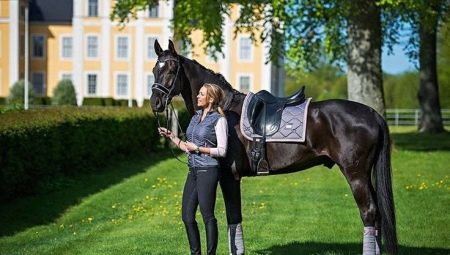
Among the compulsory equipment of a horse, equestrian sports enthusiasts always distinguish saddles and saddlecloths - mats that are fixed under the saddle and are responsible for sweating away, preventing the formation of bumps on the surface of the back. In addition, models with filling can provide additional cushioning effect when distributing loads. The lining is fixed on the surface of the back under the saddle and has special attachments to avoid its displacement. When properly selected and used, formal and casual saddles help ensure maximum comfort for both rider and horse.
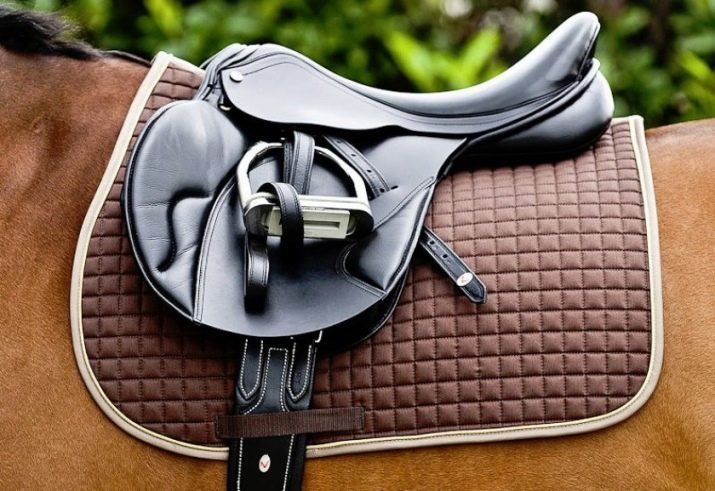
What it is?
While mastering horse riding skills, horse owners are forced to learn a lot of new information. A saddle cloth for a horse - what is it? This textile is made in a two-layer quilted design, with or without filling. The saddle cloth is oval, rectangular or square, usually visible from under the saddle. Sweat covers are also used - denser cloth or felt linings that wick away the sweat of the animal.
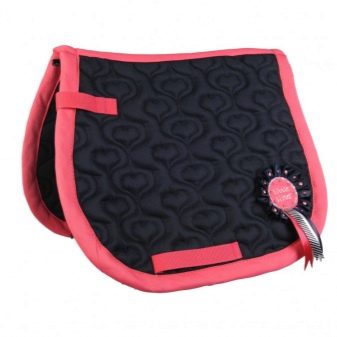
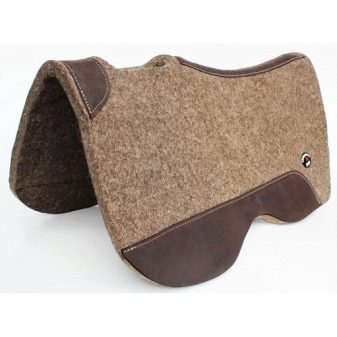
The main functions of a saddle pad in a horse's harness are:
- protection of the back surface from mechanical friction and irritation while working with a horse;
- the formation of a buffer cushioning layer between the saddle and the back of the animal;
- mitigation of shock load in case of incorrect position of the rider's body, weight imbalance;
- preventing the appearance of diaper rash on the skin;
- removal and wicking of sweat.
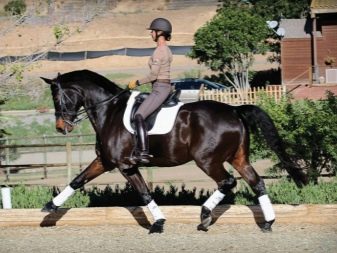
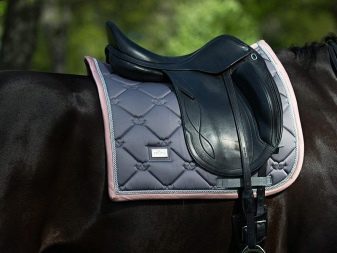
Thickness also matters - working or long-distance models are always thicker. Thin options are used during active training, horseback riding.
Review of saddle covers and saddlecloths of popular brands
The choice of saddles from various manufacturers is quite wide. Among the popular brands are the following:
- Eskadron is a German manufacturer of some of the world's most popular saddlecloth models, available in different designs and colors;
- Anky PS of Sweden is a Swedish company that produces solid-color versions of equipment that are practical and durable;
- Equestrian Stockholm is a Swedish company that creates stylish and modern premium saddlebags with an excellent level of performance;
- LeMieux is an English brand that produces products with a comfortable shape, durable and high quality, resistant to wear;
- Decathlon is a French manufacturer famous for affordable prices and a wide selection of products; there are series with a mesh, anti-slip coating.

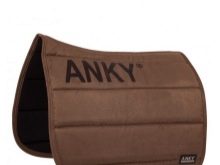

Of course, the choice of saddles is not limited to this list. Moreover, you can find custom-made products and products of domestic brands on sale. But in comparison with high-tech premium solutions, they certainly fall short.
What types are there?
All kinds of saddlecloths can be divided according to their purpose.
- Anatomical variant suitable for most saddles - triathlon, universal.
- Show jumping models suitable for show jumping saddles. They are smaller than those used for dressage, they can have a variable shape - oval, square, often used as universal.
- For ponies separate models are produced, repeating the shape of the larger versions, but in a miniature version.
- Dressage saddlecloth focused on dressage use. In this category, the models have a variety of designs and shapes; the stylistic solution can also be almost any.
- Saddlecloth shamrock - one of the simplest options, repeats the shape of the saddle, but is made of woven materials.
- Another option is a sweat cover, piece of equipment for cavalry and western saddles. They are made of wool or semi-wool with a waterproof leather or synthetic coating.
- Half-ladders have more compact dimensions, they are practically invisible from under the saddle. They are made of natural sheepskin or modern materials - neoprene, gel polymer.
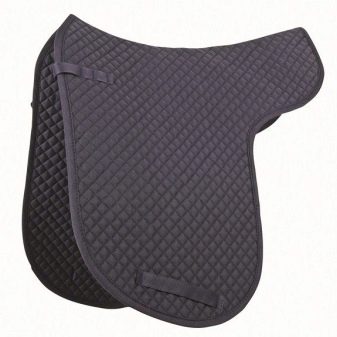
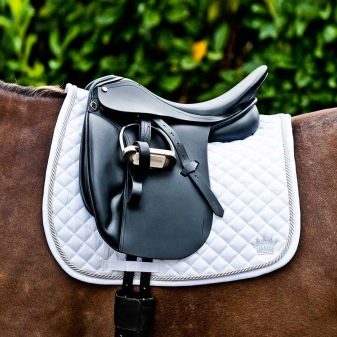
How to determine size
One of the main parameters of the saddle pad is its size. There is an officially established international classification that allows you to navigate in the selection of the optimal solution. According to it, all sweatshirts used in equestrian sports are divided:
- on Extra Full - for the largest horse breeds;
- Full - a universal option, suitable for most standard animals without features in size;
- Cob - models for compact, miniature views;
- Pony - pony version;
- Shetty - for the smallest horses, including the shetty.
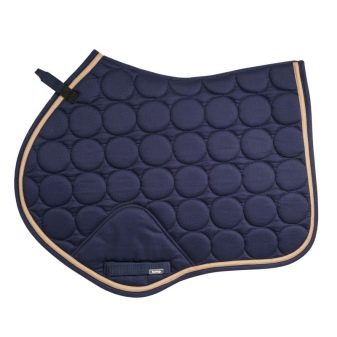

All these names are relevant for other types of equestrian ammunition, they are taken into account when selecting. The size of the saddlecloth will avoid problems with its alignment with the saddle and will help create the most comfortable conditions for the horse while moving.
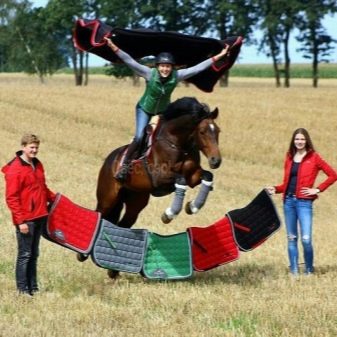
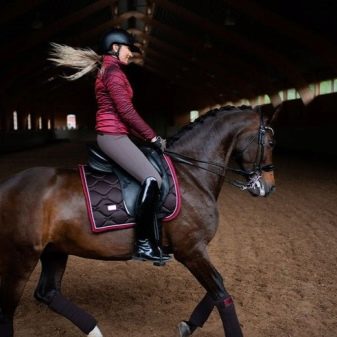
Do you need a filler?
How much filler is needed for a saddle cloth? The absence of a dense layer leads to the fact that the hygroscopicity and heat-insulating properties of the product tend to zero. Padded layered products solve this problem. Most often, felt is used inside the saddle cloth. - natural material to ensure good breathability of the lining. On contact with hot water during washing, shrinkage occurs, otherwise this option is quite good.
Other materials can also be used as fillers.Among them is synthetic foam rubber, but it can lead to overheating of the animal, it is suitable mainly for the winter period.
The padding requires fine stitching, otherwise it will tend to clump. When sewing on your own, the filler material is pre-soaked in hot water, it shrinks only once. For thin saddlecloths, it is recommended to select additional saddlecloths to eliminate their insufficient shock absorption, improve air exchange between the saddle and the animal's skin.

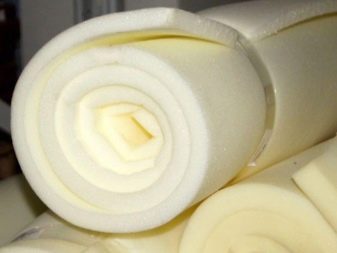
What material is it better to take a saddle cloth from?
The outer cover of a modern saddle cloth can be almost anything - there are velor options, durable cotton fabric is used. You can choose an elegant option - beautiful models have original prints, they can be decorated with logos of a stable or a club.
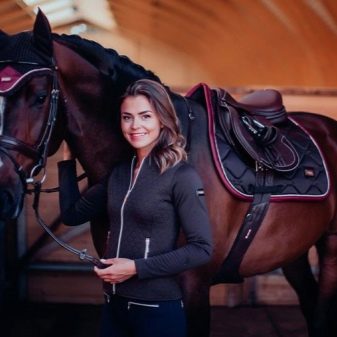

As for the filler, you will mainly have to choose from such materials.
- Sheepskin. Sweat covers and half-saddle cloths are made from it. The material is environmentally friendly, breathable, hypoallergenic, quite aesthetic for use in competitions.
- Neoprene. Waterproof material based on rubber, characterized by high elasticity, breathable. The saddle holds well on it, there are no problems with cleaning.
- Gel. A version of the saddle pad with increased shock absorption - for horses with problem backs. Helps to distribute loads evenly over the entire surface. Does not differ in hygroscopicity, requires the use of an additional breathable layer.
- Fiber or foam. There are models with a material memory effect that take a certain shape. They are characterized by breathability and good shock-absorbing properties. A versatile option for equestrian sports and dressage.

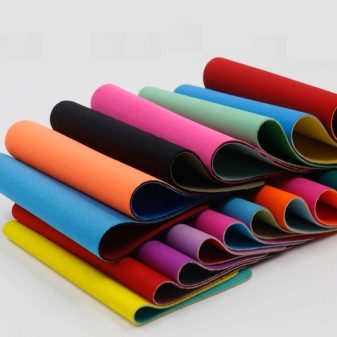
Basic selection rules
When choosing a saddle cloth for a horse, it is extremely important to make sure that its tailoring corresponds to the saddle design, height, and anatomical features of the animal. Owner's mistakes can lead to the animal having problems with the distribution of the load on the back muscles, overheating or hypothermia, and rubbing.
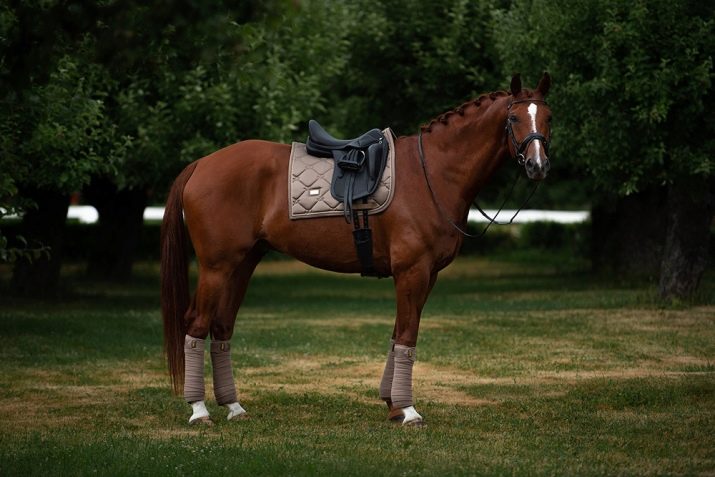
To make the right choice, you should pay attention to the following nuances.
- Workmanship. It is better to choose good products from well-known brands. Crooked seams and other design defects of the saddle cloth will chafe the surface of the skin and lead to hair loss.
- Lining thickness. Felt and sheepskin options should be used if there is enough room under the saddle.
- Convenience of loops. The best option would be Velcro loops - with them it is faster and easier to attach the saddle cloth to the ammunition.
- Conformity of purpose and labeling. It is worthwhile to study the classification of products in advance, take into account the features and dimensions of the saddle.
By following these recommendations, you can avoid mistakes when choosing a saddle cloth, and make an acquisition that can perform its functions for many years.
How to care
The padded cloth absorbs horse sweat intensively and needs proper care. To prolong its life, dry this part of the harness thoroughly after each use. Saddlecloths and saddlecloths are hung with the wrong side up to remove excess moisture from the material. Experienced riders also recommend using high-pressure car washes without detergents. The high flow of liquid easily removes dirt and hair without deforming the filler.
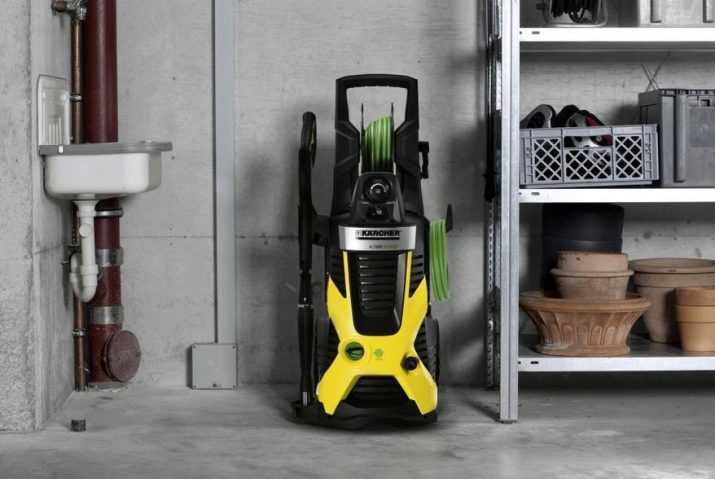
How to wash a saddle cloth correctly?
When using a washing machine, it is necessary to use the most delicate and low-temperature mode, with a spinning rate of up to 600 revolutions. When using powder, it is worth choosing hypoallergenic options for baby clothes. After washing, a wet saddle cloth must be stretched and fixed to avoid deformation. Dry naturally.
For hand washing, do not use hot water; pre-soaking is recommended to remove dirt. It is better to brush off the coat with a brush.

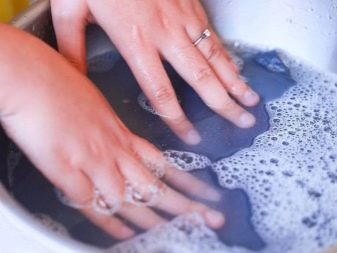
How to sew yourself
You can make a simple saddle cloth or saddle cloth yourself. How to sew correctly according to patterns and is it possible to make it without seams? Actually, most home-made options are trying to be made exactly one-piece to prevent friction of leather, from felt or sheepskin... The training one - jumping or dressage option - will have to be sewn, supplemented with a denser layer to maintain shape.
The least soiled will be white, it is better to make from hygroscopic cotton fabrics.
First, a pattern is made from the finished product, an allowance of 0.5 cm is added to the seams and along the thickness of the inserted layer. Further, the saddle cloth is formed, outlined. The part is stitched along the edge, then along the perimeter, forming squares, excluding the displacement of the layers. The edge of the product is processed with a decorative edging, straps are sewn onto the side sections for attaching to the girth and other elements of the harness.
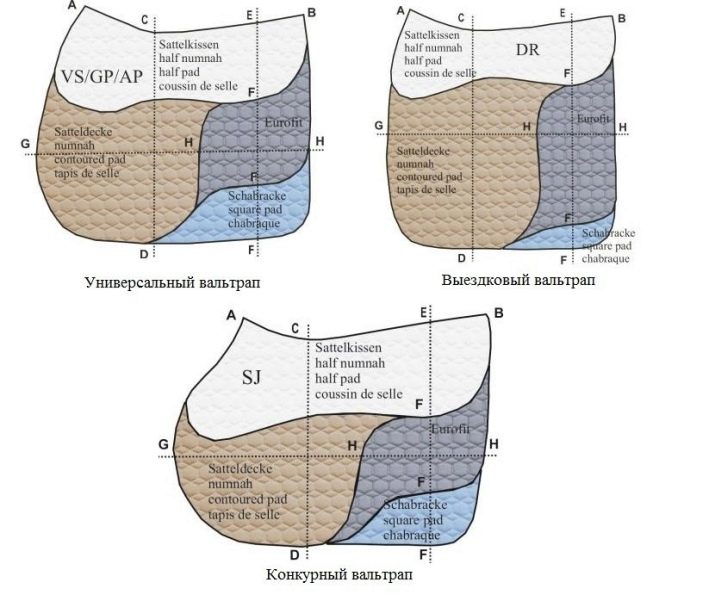
For information on how to sew a saddle cloth with your own hands, see the next video.








